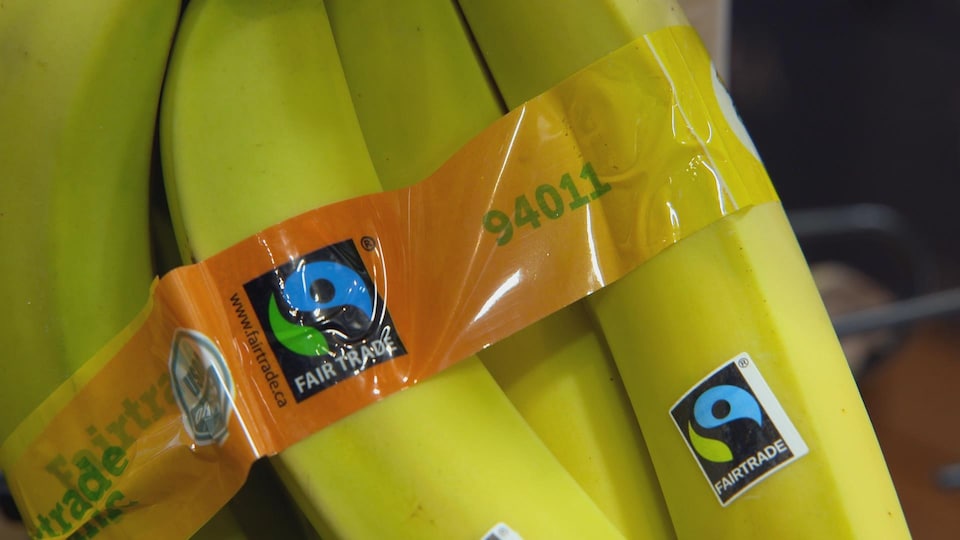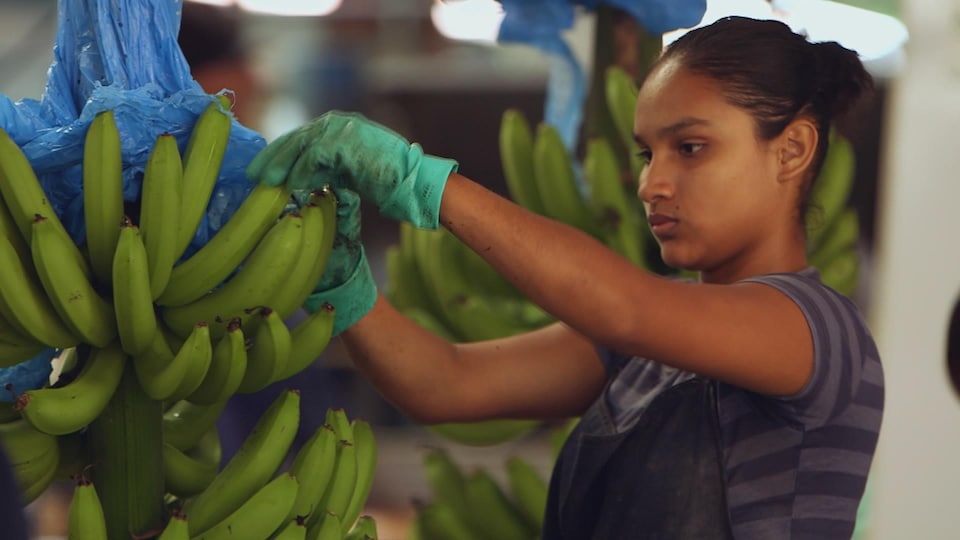In the context of high inflation, bananas stand out: for 25 years, its price has continued to fall. So some producing countries are sounding the alarm. For them, this still low price no longer takes into account the increase in production costs, resulting in some producers losing money.
It should be noted that the price of bananas has been stable for a decade. For international vice president and business development distributor Courchesne Larose, Guy Milette, this stability is particularly explained by the productivity gains. Banana production methods have resulted in a production volume of 4500 cases per hectare per week. Twenty years ago, we barely had 1,200, 1,500 cases. The increase in production has helped greatly to control costs, even to see them go down.
Guy Milette pointed out that companies that specialize in bananas (Dole, Del Monte, Chiquita, etc.) control logistics and transportation. Major banana companies have their own ships, which allows them to have stability in terms of transportation costs.
Another aspect for this food distribution specialist: bananas are used by retailers as a “Trojan horse”. The average consumer will not remember the price they paid for their celery last week. But banana is one of the products with a very stable price that consumers remember. Large chains will use bananas to attract shoppers to the store.
Finally, food chains have signed long -term contracts, Guy Milette explains. They guarantee prices and remain protected from supply and demand doubts..
The real value of bananas
Like coffee and cocoa, there has been a fair trade and organic banana market for several years. Jennie Coleman is the head of the Equifruit company, which distributes this banana nationwide. Demand is strong, despite a slight 2% market share.
It begs for the consumer as well as the entire supply chain to pay the right price.
If we paid the same price in 2022 dollars as we paid in 1995, the average banana would be at $ 1.05 per pound. Bananas have long been kept cheap in the grocery store and the difference in price between what you have to pay and what you pay is a huge chasm that other people pay.explained Jennie Coleman.
” Nothing is free. It’s like we’re asking small producers to subsidize a product for us through their bad wages and horrible working conditions. “
In the world of tropical fruits and vegetables, very little is produced and sold fairly, says Fairtrade Canada general manager Julie Francoeur.
In fair trade, we try to deliver justice to workers in a more equitable way and recognize a fair price for the product.explained by Ms. Francoeur.
I was really shocked by a report that came out last year describing working conditions on plantations in Guatemala, Jennie Coleman added. People work an average of 68 hours a week for just over $ 1 US of time, with verbal or sexual harassment. However, keep in mind that 40% of the bananas that enter Canada come from Guatemala.
For Guy Milette, low wages are particularly explained by the fact that distributors have no control over working conditions in producing countries.
Rising production costs
Inflation has huge consequences for banana producers: explosion of local transportation costs, the price of inputs (fertilizers, pesticides), the price of packaging … And that does not take into account the war on Ukraine and the sanctions against Russia. Demand is declining, as are prices. So last January, seven Agriculture Ministers from producing countries (including Ecuador leading) met to form a common front and demand a fairer price. so as not to jeopardize the banana industry.
However, even banana giants like Dole also offer fair trade bananas. They are mainly sold in Europe. In Canada, demand is still very low.
A slight difference for the consumer
For Jennie Coleman, the price difference between conventional bananas and fair trade bananas remains small.
Fairtrade Canada studied the price difference across the country.
The price of conventional bananas is approximately $ 0.69 per pound, on organic bananas, approximately $ 1 and on organic and fair trade bananas, from $ 1 to $ 1.29 per pound.
The average Canadian consumes 33 pounds of bananas per year, Julie Francoeur calculates, so this represents an annual price difference of $ 10 to $ 20 depending on the region.or 20 to 40 cents per week.
Banana sales at Equifruit will rise 40% in 2021, Jennie Coleman reports. We need to think bigger than just the packaging of our fruits and vegetables. We must think about who made them, under what conditions and how much was paid to the producers.
Source: Radio-Canada

